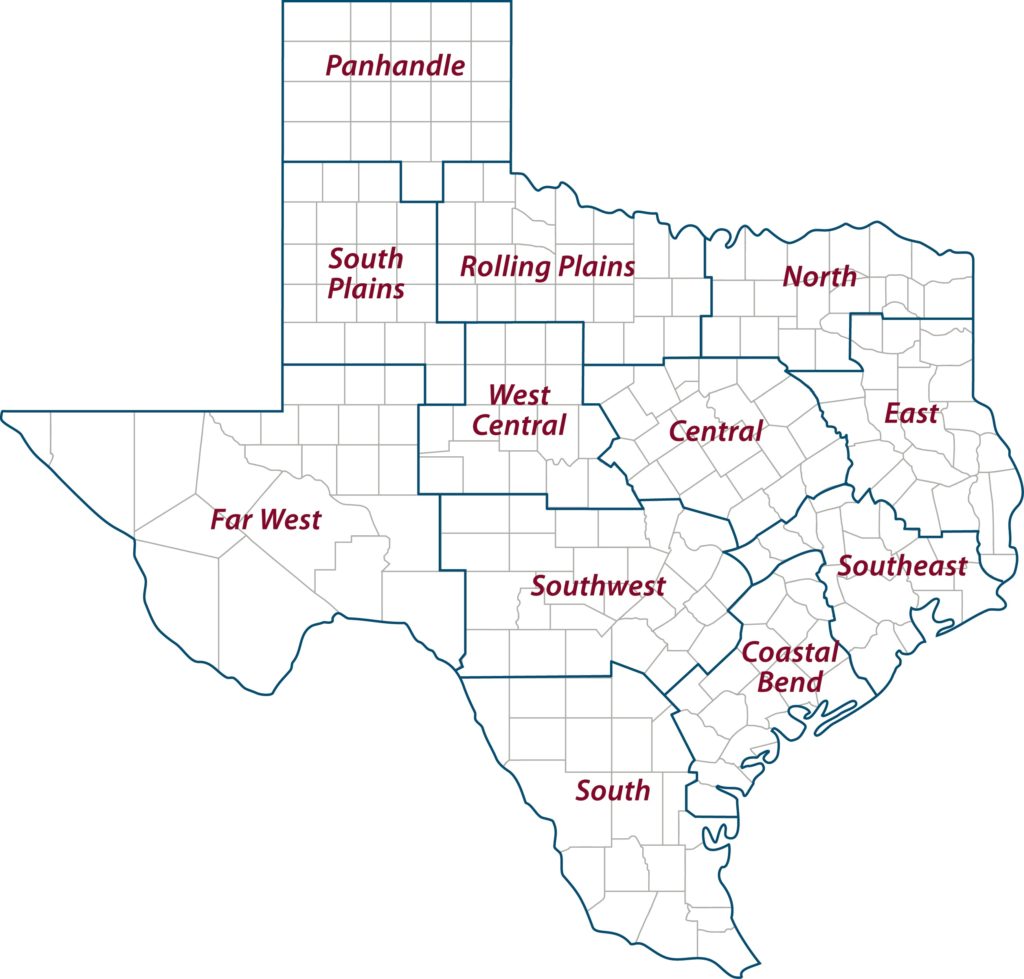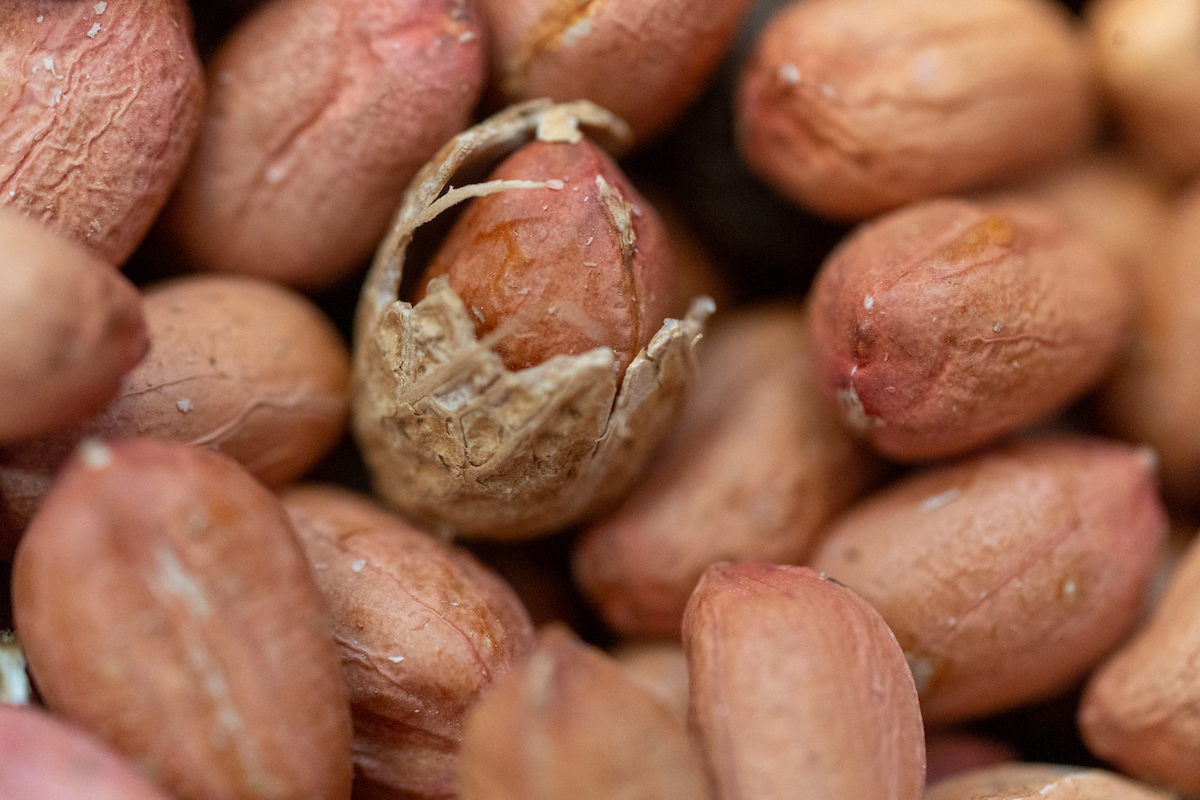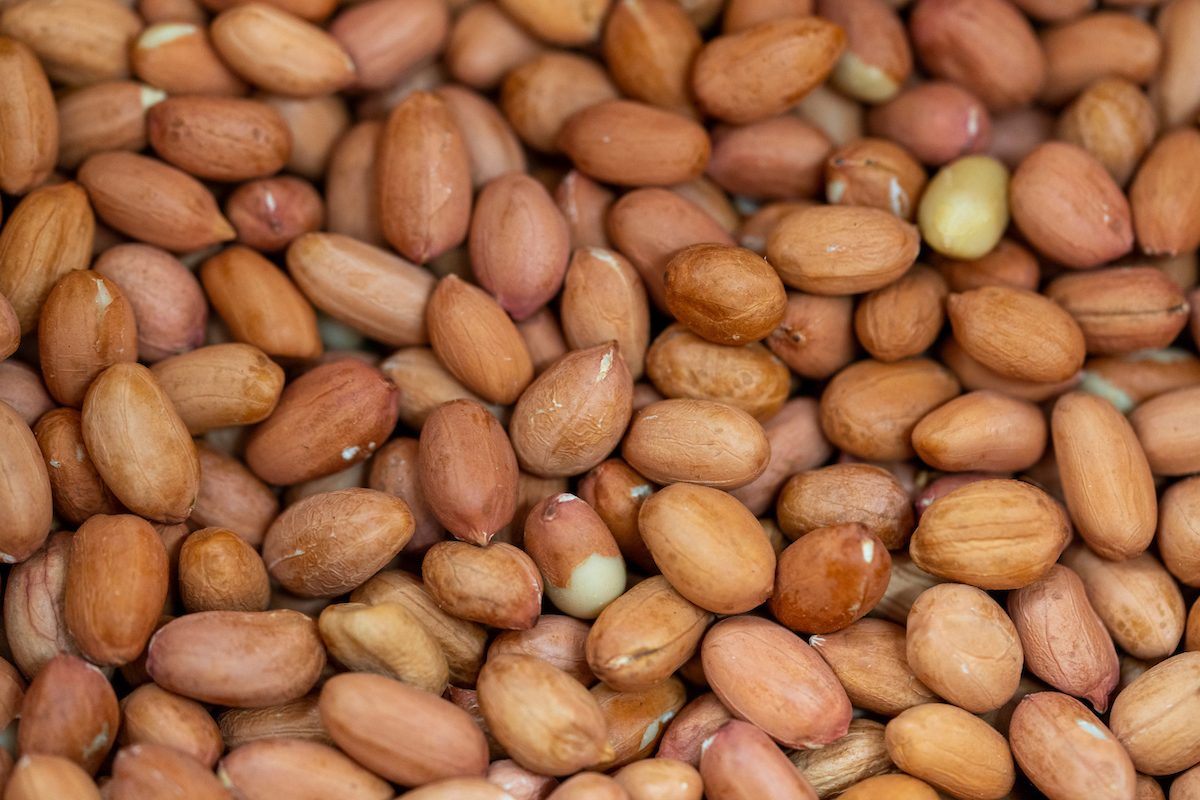Texas peanut producers faced tough 2020 season
Texas Crop and Weather Report – Nov. 17, 2020
Texas peanut producers experienced a difficult 2020 growing season due to drought, according to a Texas A&M AgriLife Extension Service expert.

Emi Kimura, Ph.D., AgriLife Extension state peanut specialist, Vernon, said dry weather from April to September led to below-average yields as peanut producers near the end of harvest.
“Harvest is almost done in most areas because there’s not been much rain to slow us down like in 2019,” she said. “There’s not much positive news beyond that on the production side.”
Overall, Texas peanut producers planted 190,000 acres compared to 165,000 acres in 2019, Kimura said. Harvested acres were estimated to be 180,000 compared to 160,000 in 2019, according to the National Agricultural Statistics Service November report.
Despite planted acres being up more than 13%, yields on those acres were down 11.5%, according to the report. Peanut producers netted 2,700 pounds of peanuts per acre on average compared to 3,050 pounds per acre last year.
Peanut producer: ‘not a single drop of rain’
Kimura said the No. 1 cause for reduced yields was the lack of moisture despite irrigation efforts.
“Some producers in West Texas said they experienced worse drought conditions than in 2011,” she said. “One producer said he’d never had a season without a single drop of rain until this year.”
Kimura said the weather station for Seminole showed 1.9 inches of rain for April through September. Last year, the same weather station reported 13.6 inches of rainfall during the same period.
“I count April because any rains leading up to May planting typically set up the crop for good establishment,” she said. “Rains in July and August are very critical for the crop’s development, and less than 2 inches over the season was not enough.”
Kimura said rain measurements at the weather station in Memphis, which is a good indicator for High Plains peanut fields, were not as bad but still 7 inches below last year. Stephenville and South Texas fields also received below-normal rainfall amounts on average.
The silver lining in a lack of moisture was below-average pest and disease pressure, Kimura said. There were some cases of leaf spot in South Texas, but nothing major to report across the state.
More bad news
Quality grades will potentially decline for some growers due to a freeze event in late October, she said. Temperatures dropped from 80 degrees to 25 degrees on Oct. 26-27.
The extreme dip in temperatures during harvest caught some producers off guard and added to an already tough season, she said. Freezing temperatures did not drop soil temperatures low enough to cause significant damage to peanuts still in the ground, but some producers had already dug peanuts that were exposed and damaged.
Kimura said the impact on exposed peanuts depended on how much moisture was in the kernel during the freeze, but even pods dry enough likely sustained some damage. One producer reported digging 5,000 acres of peanuts before the looming freeze was apparent.
“Once they dig, the peanuts need to dry down for a week,” she said. “Some producers did not learn about the freeze soon enough or were caught by surprise. But those who didn’t dig likely didn’t sustain as much damage as those who dug before the freeze.”
Kimura said some peanut producers around the state performed well. They received decent rains, kept pest and disease pressure in check and perfectly timed harvest to avoid freeze damage.
But the average per-acre yields mean many producers endured a very difficult growing season, she said.
“Conditions were crazy this year,” she said. “It was really difficult to talk to peanut producers in West Texas because they were depressed by the drought on top of everything else going on. As specialists, we make recommendations and give options that can improve a grower’s outcome, but there’s not much we can do about zero rainfall.”
Prices low, but demand increased
Francisco Abello, AgriLife Extension economist, Vernon, had a little good news for Texas peanut producers but said prices were low.
U.S. peanut acres increased 17%, according to the U.S. Department of Agriculture. Those acres were producing high yields on average, which translates into a 21% higher production forecast compared to 2019.
But domestic and export demand has also increased dramatically, he said. Demand for peanut butter and candy during the COVID-19 pandemic drove domestic increases, and exports increased 36% compared to last year as China ramped up purchase orders.
Low peanut prices – $424 per ton for runners; $428 per ton for Virginia peanuts, for example – will likely make them eligible for government assistance, he said. The breakeven price, or the price that would cover input costs, as well as equipment depreciation and other expenses to produce a ton of peanuts, is $430 on average, according to AgriLife Extension economist calculations.
USDA Price Loss Coverage, PLC, payments could benefit farmers who participated in the 2020-2021 program, he said.
“That’s important for a farmer’s gross margin,” he said. “But the final estimated payment will depend on the actual PLC-based yield from the individual farm, and the final reference price for the 2020-21 season.”
AgriLife Extension district reporters compiled the following summaries:

CENTRAL
Temperatures were typical for this time of year. Wind gusts over 20 mph caused soil moisture loss. Topsoil moisture conditions continued to deteriorate and remained inadequate for crop germination. Just over half the counties reported short soil moisture. Additional winter wheat plantings were in limbo pending receipt of significant precipitation. The outlook for rainfall over the next week to 10 days remained bleak. The very few winter wheat fields that germinated emerged unevenly. Pastures were deteriorating, and stock tanks were drying up. Livestock were in good condition as producers supplemented with hay. Warm temperatures helped minimize feeding requirements for livestock. The pecan harvest was going well, and peanut and cotton harvests were complete. Most small grain acres were planted, and some cover crops were still being planted over second-crop corn acres. Second crop corn and sorghum quality and yields were very good.
ROLLING PLAINS
Weather conditions were warm and windy. Areas needed significant rains and runoff to fill water tanks and lakes. Wheat producers were finishing wheat planting, and fields were starting to emerge. Cotton was in fair to good condition as harvest continued. Cattle producers continued to provide supplemental feed in areas with limited grazing.
COASTAL BEND
Weather conditions remained extremely dry. Some fieldwork was still ongoing, but low moisture conditions were limiting most producers. The ratoon rice crop was being harvested. Rain was needed for winter pastures – wheat, oats and ryegrass – as soil moisture reached critical levels. The final hay cutting was wrapping up. Cattle were in good condition. Weaning and culling continued, and livestock markets continued to report large sale volumes. Some producers were feeding hay and protein. Livestock water was a growing concern, and more producers were starting to consider alternative means for providing water through filling stock ponds or placing water troughs. The pecan harvest continued with good yields reported.
EAST
No report.
SOUTH PLAINS
Dry conditions continued across the district. Farmers were busy stripping cotton. Most farmers expected to finish harvesting cotton before Thanksgiving. Many producers finished cotton harvest and began planting winter wheat. Local cotton gins expected to complete ginning by mid- to late-December. Very little dryland winter wheat had emerged due to the lack of moisture. Local cattle producers were relying heavily on hay and supplemental feeding.
PANHANDLE
Northern and central parts of the Panhandle reported short to adequate topsoil and subsoil moisture. Southern areas reported short to very short soil moisture levels. Sorghum harvest continued, and some producers neared completion. Winter wheat was in poor to good condition. Cotton fields were poor to fair. Producers continued to harvest cotton after recent weather events. Cotton yields were average to below average. Corn harvest completed, and some hay fields were still being cut and baled. Winter wheat was being planted and irrigated behind the cotton harvest. Irrigated wheat looked excellent, but dryland acres were struggling.
NORTH
Topsoil moisture throughout the district was adequate to short. Some area soils were dried out from lack of moisture. Temperatures were warmer with daytime highs in the mid- to upper-70s and nighttime temperatures in the mid-30s. One day reached above 80 degrees. Most hay was cut, baled and out of the field. Winter forage crops needed a good soaking rain. Winter wheat was emerging and looked good in some areas. Livestock were in good condition. Spring-born calves were being weaned. Feral hogs continued to be very active.
FAR WEST
Temperatures have been in the mid-90s with lows in the upper 30s. No precipitation was reported. Cotton harvest was almost complete. Most growers were busy shredding stalks. Cotton did not produce well without a measurable rain the last two months. Wheat plantings increased. Producers were dry planting in hopes of eventual rain. Some emerged wheat was dead or would die without water and will likely require replanting. Pumpkins and corn were still being picked. Growers were a little concerned about a hard freeze that occurred Oct. 26. Rangeland and pasture conditions were dry and declining. In the Rio Grande Valley, Pima and Upland cotton harvest was active and the regional gin was operating at full capacity. Early reports indicated yields were a little above average. Early maturing pecans were beginning to drop. Pawnee pecan orchards were harvested in some areas, and Western Schley pecans should be harvested in the next few weeks. Alfalfa producers were cutting or clipping remaining stands. Livestock producers were anticipating typical price increases in local markets as the holidays approach.
WEST CENTRAL
Dry conditions caused wheat, oats and pastures to be poor to very poor. The district needed moisture. Cotton was mostly harvested, but yields were below average due to dry conditions. Winter wheat plantings continued and were almost complete. Many farmers and ranchers were feeding livestock with hay and protein earlier than normal. Cattle markets were steady, and the goat market was up. Stock tanks were still in good condition.
SOUTHEAST
Soil moisture levels continued to decline. Some forage crops were beginning to show stress, while some areas were performing well. Irrigation of backyard fall gardens increased. Overall, livestock were in good condition. Soil moisture levels were short to surplus with short levels being the most common.
SOUTHWEST
Moisture conditions continued to decline with no rain reported across the district. Rangeland and pasture conditions were declining as a result. Kinney County reported winter wheat had not been planted due to warm temperatures and dry conditions. Livestock conditions were fair to good with supplemental feeding. Harvested white-tailed deer were in good condition.
SOUTH
No rain was reported across the district. Soil moisture conditions continued to be short to very short across the district. Sunny daytime conditions with temperature highs in the mid-80s turned cool and damp overnight. Jim Wells County reported reaching 90 degrees. No rain was in the forecast. Strawberries were progressing. A few early planted strawberry fields bloomed and were setting fruit. Peanut harvest continued. Wheat planting was completed, and the crop had emerged. All types of fieldwork slowed. Pasture and rangeland conditions continued to decline due to lack of moisture. As a result, livestock supplemental feeding continued to increase. Heavy dew helped maintain fair rangeland conditions. Trees were defoliating. High temperatures were detrimental to some fall crops. Warmer temperatures have not helped hunting conditions. Pecan harvest was going well with a good production year expected. Row crop producers continued to prepare fields for winter in hopes of receiving some moisture. Some farmers fertilized and irrigated vegetable fields. Beef cattle producers were starting to cull again and weaning calves earlier than normal. Prices for feeder calves rebounded at local markets. Hay producers were still cutting and baling. Hay prices were $50-$65 for round bales, and producers were stocking up. Water levels in stock tanks were dropping in some areas and holding steady in others. Citrus harvest continued, and many row crop farmers were still performing tillage operations for next year’s crop.





